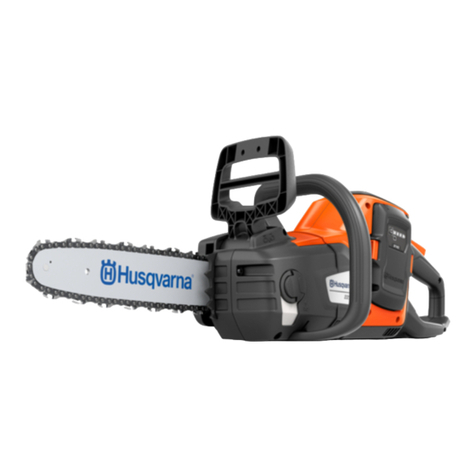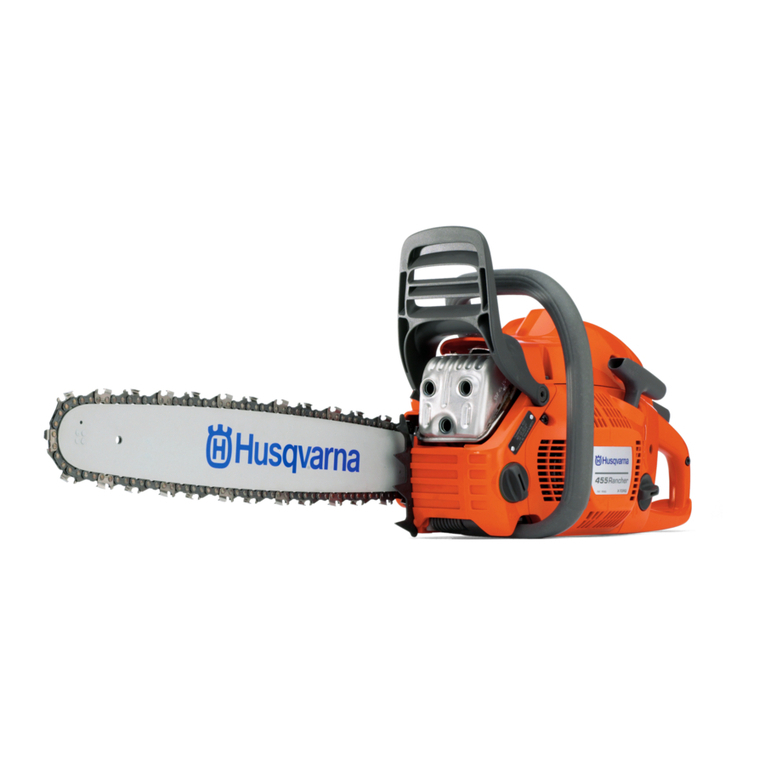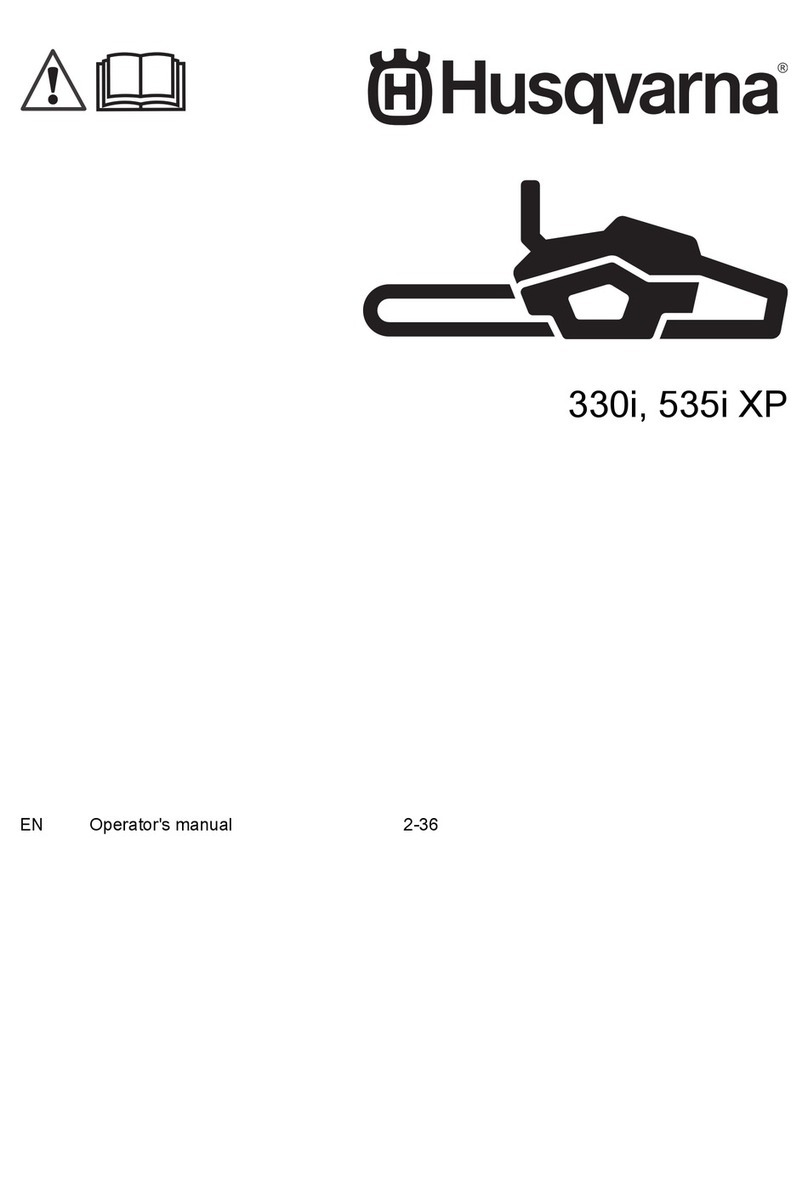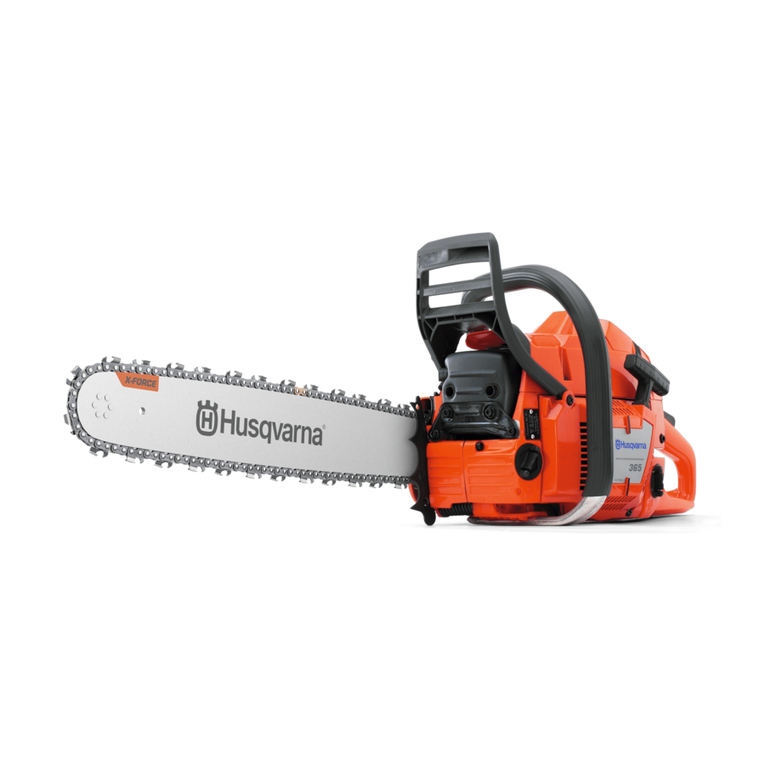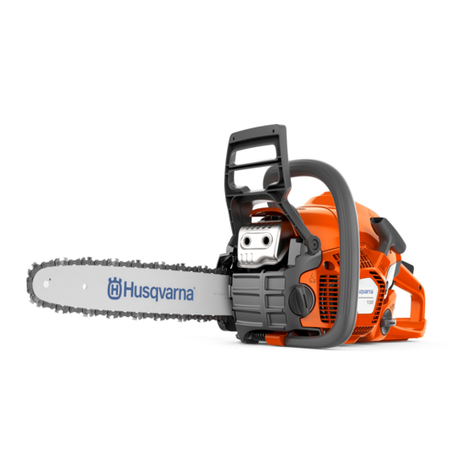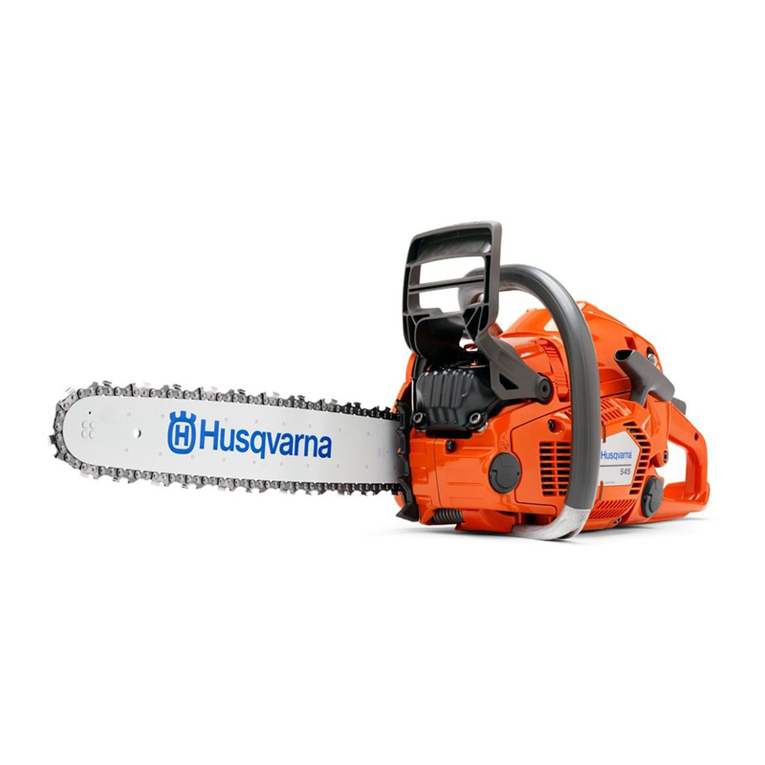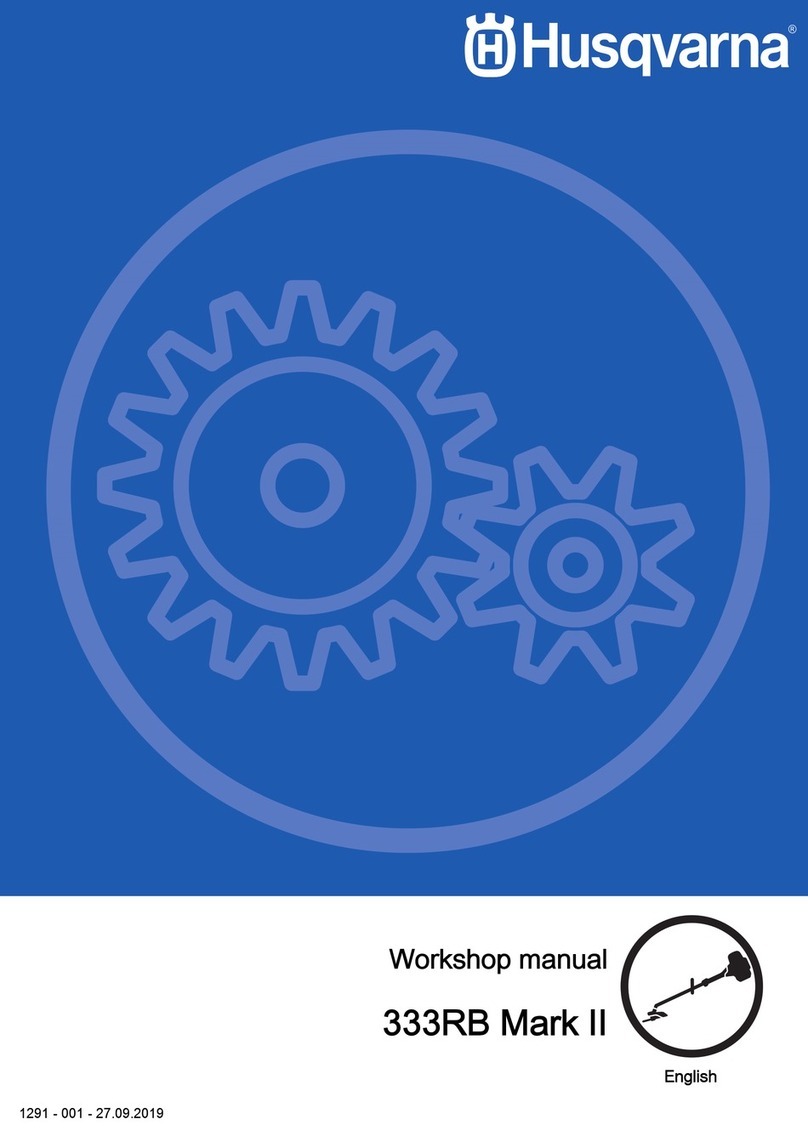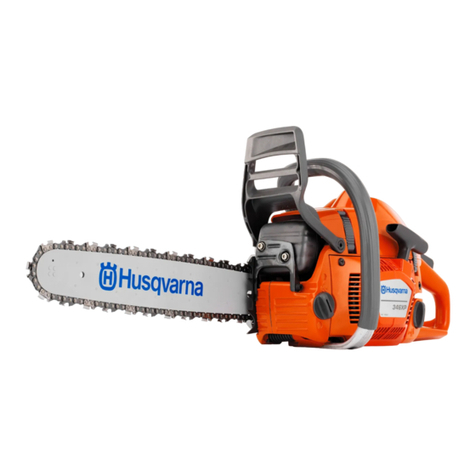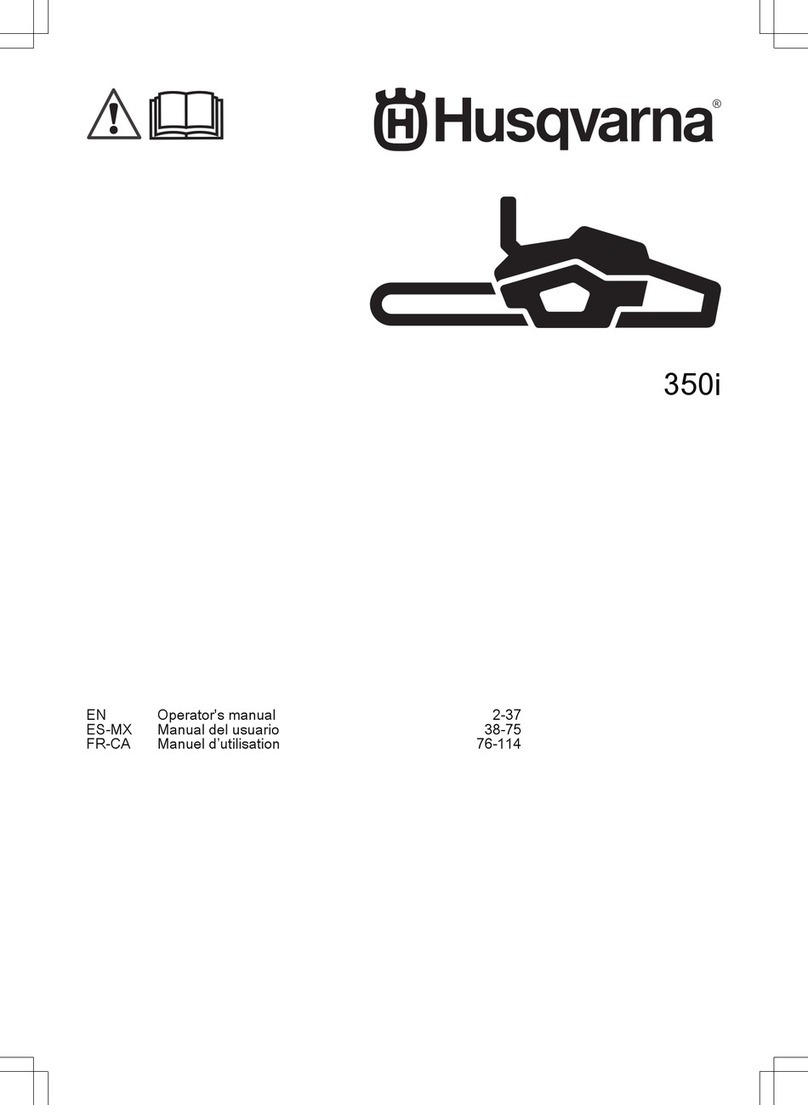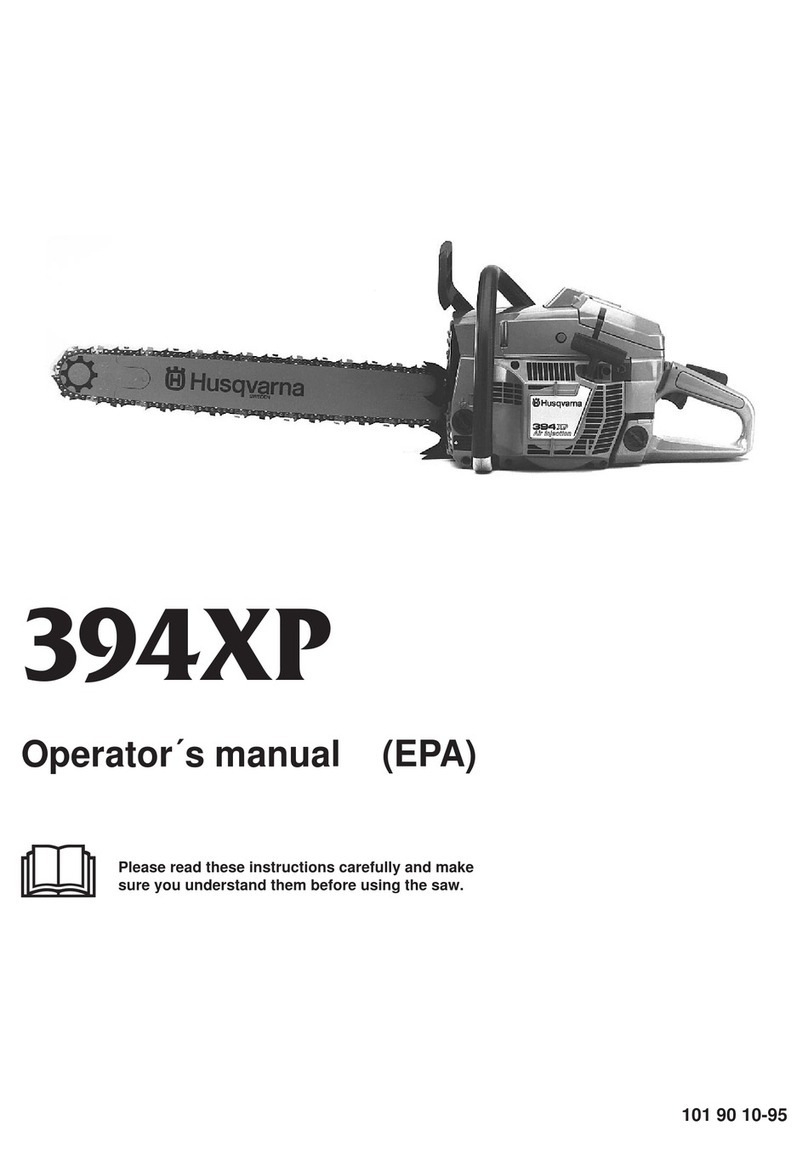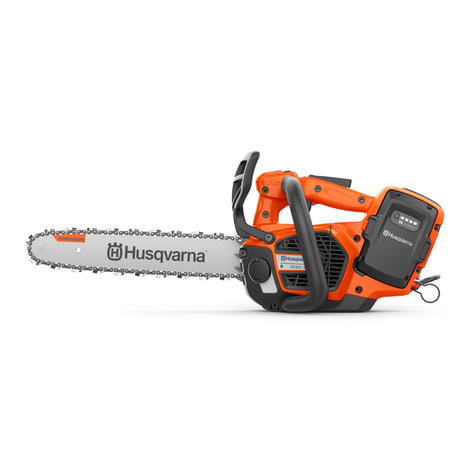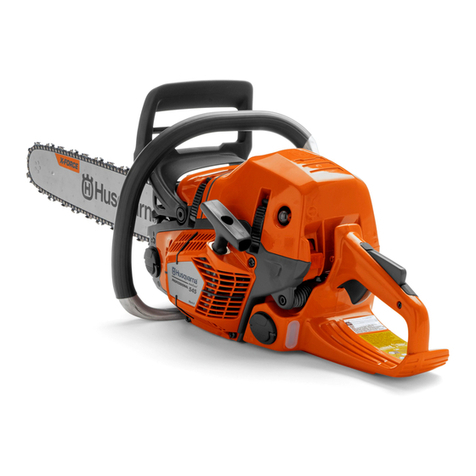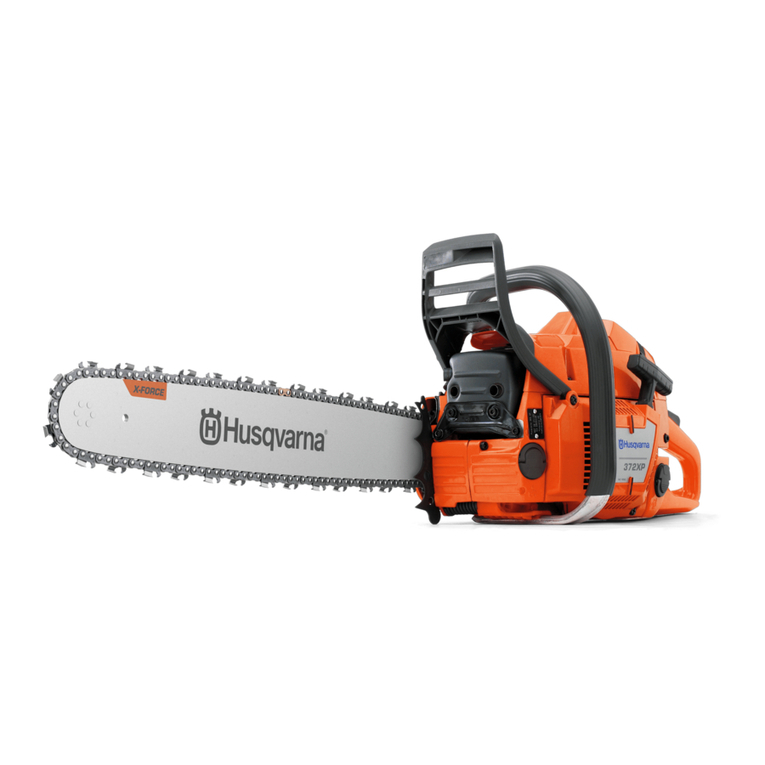ADJUSTING THE CHAIN BRAKE
Tension the brake lining of the chain brake by screwing in the nut
clockwise (see fig. 5) until the chain cannot be pulled round by hand in
its proper direction. Then loosen the nut approx. 4 tums. Now it shall
be possible to pull the chain round easily without the brake lining
being in close contact with the clutch drum.
The automatic chain brake actuator (Swed-o-Matic) shall be ad-
justed so that the distance between the hand le and the set screw on
the chain brake is approx. 5 mm (see lig. 6). Alarger distance re-
quires a greater force to make the Swed-o-Matic actuate.
Fig.5
Check the chain brake function regularly.
A. Start the chain saw and release the brake (safety handle in lorward
position)
B. Open the throttle quickly. Now the chain is not supposed to rotate.
At correct adjustment the Swed-o-Matic is supposed to actuate at a
load of 10-12 kp (2.2Ib) on the guide bar nose.
Check the adjustment as follows:
Keep the saw horizontally 35 cm (14") above a stump. The brake is
supposed to release when the saw is pending, by its own weight,
around the rear handle and hits the stump.
MAINTENANCE OF THE CHAIN
BRAKE
Use the chain brake as aparking brake when moving the chain saw
and when making short breaks.
At breaks:
Check that the chain brake mechanism runs easily without seizing.
If it seizes:
Remove resin and sawdust from the chain brake. See to, that bear-
ings and sliding surfaces (see fig. 6) are lubricated with chain oil
or temperature-resistant engine oil.
Check that the braking capacity is sufficient. If not, adjust the chain
brake by means of the adjusting knob. (N.B. See to, that the brake
lining does not lie close to the drum in unbraked position).
At the service workshop:
Check that the braking mechanism and the braking lining are free
from sawdust and dirt.
Check the wear of the braking lining and see to, that it does not lie
elose to the drum in unbraked position.
Check the wear of the release.
Check that the safety handle is not deformed and that it has the
correct distance to the handle.
Lubricate with chain oil or temperature-resistant engine oil the bear-
ings and sliding surfaces of the safety hand le.
Check that the autornatic release "Swed-o-Matic" is adjusted prop-
erly (see fig. and above instructions).
ADJUSTING THE CARBURETTOR
The carburettor has three adjusting screws:
L
=
Low speed needle
H
=
High speed needle
T
=
ThroHle adjusting screw
The carburettor is adjusted as follows:
1. Clean the air filter.
2. Screw the needles H and L carefully right in.
3. Then screw the needles out to recommended basic position:
H
=
1
turn out,
L
=
1
turn out
Fig.7
4. Start the engine and warm it up. Adjust the idling speed by means
01
the throttle adjusting screw to that R.P.M., at which the chain
starts rotating.
5. Adjust the low speed needle to reach the highest R.P.M., at which
the engine is still idling. Then screw the needle out equivalent to
10 minutes on.a clock-face.
Fig.8
6. Again adjust the idling speed by means of the throttle screw (see 4
above) so that a speed of approx 2,500 r/min is received.
7. At correct adjustment of the high speed needle, the engine is
supposed to be fourstroking.
If this is not the case, screw out the needle to reach a distinct
fourstroke.
Engine speed: Maximum 12,500 r/min.
NOTE
SHOULD THE ENGINE NOT BE FOURSTROKING,
THERE IS A RISK OF PISTON SEIZURE.
THE HIGH SPEED NEEDLE SHALL BE ADJUSTED FOR
MAXIMUM POWER AND NOT FOI=l
MA)(IMII~A 0<="'"
